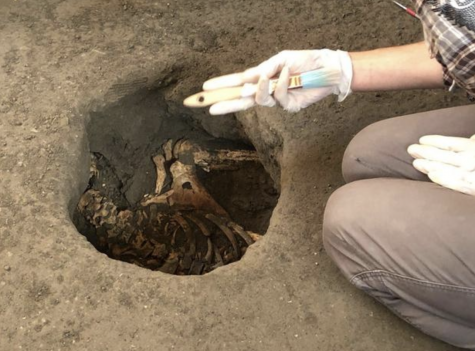Excavation of two Pompeiian bodies unearths new evidence
December 8, 2020
The remains of two Pompeiian residents were found at an excavation site in November buried under several feet of ash from the eruption of Mount Vesuvius, offering a different story than what historians have written. Pompeii is an ancient site on the southwest coast of Italy.

Currently, researchers are exploring one ancient villa, the Civita Guiliana, which is thought to have overlooked the Mediterranean Sea. Through extensive work in the area, they uncovered what are believed to have been two men, one between the ages of 30 and 40, the other between 18 and 25. Unlike previous excavations, these bones are thought to hold the key to a better understanding of what happened the day the city became a ghost town. The entire town of Pompeii was blanketed by ash and all of its residents were killed when Mount Vesuvius erupted in the year 79 AD.
Once the bodies were recovered, researchers used the plaster casting method to learn more about the residents and how they died. Armed with the latest technology, they were able to create two figures that not only revealed the position in which they died but also what they wore.
“They really seem like statues,” Massimo Osanna, outgoing director of the Archaeological Park of Pompeii, said in a video by the Culture Ministry.
Through examination of the casts, they determined that the men must have worn wool tunics. This provided new evidence that the eruption may have happened in October instead of August as previously thought.
The position of the bodies also added to the evidence that a pyroclastic flow from Vesuvius wiped out any remaining residents who managed to escape the initial eruption of ash and lapilli.
“They very likely died by thermal shock, as the contracted limbs, hands and feet would suggest,” Osanna said in the video.
With new research and discoveries, archaeologists will be able to bring the full story of Pompeii and its residents to light.

